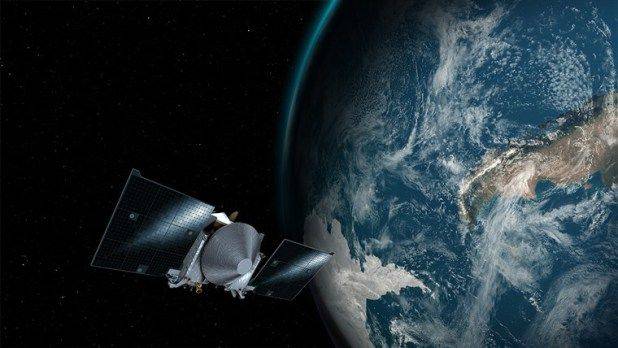ROME: International scientists gathered at the National Research Council (CNR) in Rome to discuss how space technology can improve life on the Earth.
The three-day conference was spearheaded by the European Space Agency (ESA), whose 11-nation MELISSA project for the past 28 years has been investigating how to recycle waste into drinking water, oxygen and food aboard spaceships.
"The technologies aim to facilitate human exploration of the solar system," explained MELISSA project chief Christophe Lasseur.
"But they can also be useful for current global challenges such as waste recycling, water supplies, and food production throughout our planet."
ESA plans to land the first human mission on Mars by 2040. The voyage takes six months, and would require bringing over 30 tons of supplies -- if no alternative is found.
"We need systems that can regenerate resources during the voyage out, and on the bases that will be set up on those planets," said agronomist Alberto Battistelli, chief researcher at the CNR's Institute for Agro-Environmental Biology and Forestry.
"To do this, we will use plants," he told Xinhua.
The scientific know-how being generated, Battistelli added, has applications right here on Earth, which is beset by wasteful overproduction of food in some countries while entire populations suffer from malnutrition and hunger in others.
The nugget of this research is the EDEN project at the Neumayer III station in Antarctica, where a team of CNR and other scientists have created a self-sustaining greenhouse under prohibitive conditions similar to those on Mars.
"It's a closed system," Battistelli said. "Once you get there, you can't get any supplies -- you remain isolated for months, in stressful conditions, with no access to fresh food."
Coordinated by German space agency DLR, EDEN is run by a consortium that includes Italy's CNR and is financed by the European Commission to the tune of 45 million euros (53 million U.S. dollars).
EDEN has already produced a variety of nutrient-rich vegetables such as tomatoes, cucumbers, and leafy greens, using an entirely circular system that recycles every single drop of water.
"Current agricultural systems (on Earth) employ 70 percent of all water being used for human consumption," Battistelli pointed out.
The EDEN model, he said, could be applied on Earth on a large scale, including in areas where conventional farming is not possible -- for example, in deserts.
Another example of how space research can benefit people on Earth is the Inspiration project, which was the brainchild of scientists at Belgium's SCK-CEN research institution.
In a presentation titled "Mission to Mars Inspires Food Project in Congo", SCK-CEN chief microbiologist Natalie Leys recounted how scientists teamed up with a local NGO to introduce cultivation of a micro-organism called spirulina to combat malnutrition in the Democratic Republic of Congo.
"Our focus was knowledge transfer," said Leys.
Scientists had found that spirulina -- a naturally occurring salt lake bacteria that produces 60 percent of the oxygen on Earth -- is ideal for supporting life on spacecraft: it absorbs carbon dioxide, produces oxygen, is resistant to cosmic radiation, and is highly nutritious.
A native of East and West Africa, Mexico and South Asia, spirulina is one of the tiniest, oldest and most robust life forms on the Earth.
After testing spirulina cultivation tanks for a year, the Belgian scientists brought the technology to DR Congo, where they shared it with village communities, universities, and agricultural schools.
"There was quite a lot of interest," Leys said. "We found that the way to go is to 'seed' the knowledge through universities." Xinhua






